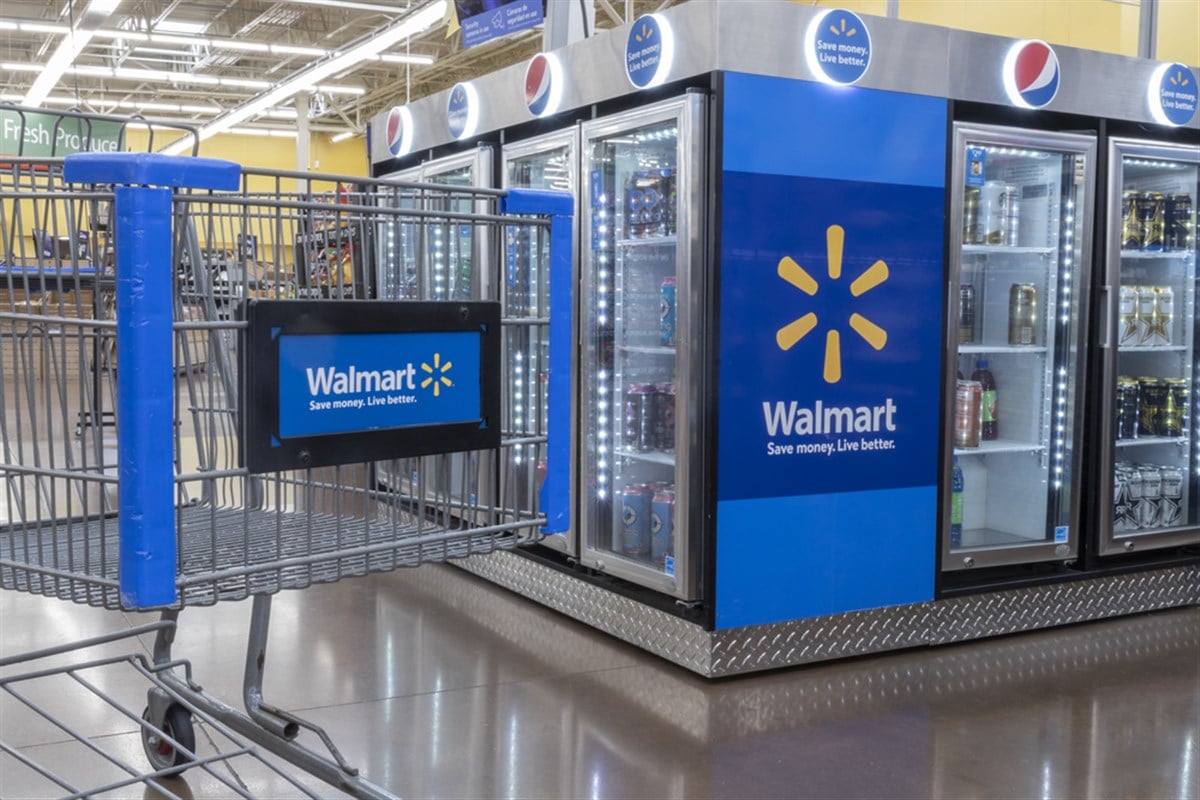Financial News
Retail Earnings: Value, Caution, and Luxury in a Shifting Market

Retail sector earnings season is about more than the statistics and metrics of your favorite retail brand. It's a window into the evolving dynamics of consumer behavior and the economic forces shaping multiple industries. The interplay between consumer staples and consumer discretionary spending is crucial to understanding these dynamics. Analyzing earnings reports through this lens provides investors with valuable insights into which segments of the economy are thriving and which are facing challenges. This week’s reports from retail giants Walmart (NYSE: WMT), Home Depot (NYSE: HD), and Tapestry (NYSE: TPR) offer a compelling glimpse into a market where consumers are making calculated choices, balancing their desire for value with concerns about economic uncertainty and shifting consumer priorities.
Walmart: Value Reigns Supreme
Despite inflationary pressures, Walmart continues to prove its resilience and ability to cater to the value-conscious consumer. Walmart’s earnings report for the second quarter of 2024 showcased this strength, revealing a retailer strategically positioned for success in an environment where affordability is essential.
Walmart's revenue increased by 4.8% to $169.3 billion. The critical metric of comparable store sales in the United States, which increased by 4.2%, served as the driving force behind this growth, indicating the strong performance of existing retail locations. This highlights Walmart's success in attracting and retaining customers seeking value for their everyday essentials.
Beyond brick-and-mortar, Walmart's omnichannel strategy is paying off. Global eCommerce sales are up 21% year-over-year, reflecting the company's online and offline shopping experiences integration. This flexibility caters to diverse consumer preferences and fuels growth across both channels.
Walmart's commitment to cost control is evident in its operating income growth of 8.5%, reaching $7.9 billion, outpacing revenue growth. This efficiency further strengthens Walmart's ability to offer competitive prices in an inflationary landscape.
Walmart’s financial performance has bolstered internal confidence in the future, leading to a raised FY25 guidance. Net sales are now expected to grow between 3.75% and 4.75%, up from the initial 3.0% to 4.0% projection. Similarly, adjusted operating income is projected to grow between 6.5% and 8.0%, compared to the previous range of 4.0% to 6.0%. This upward revision signals a positive outlook for the remainder of the fiscal year, suggesting continued growth potential for the company.
Home Depot: A Dip in DIY
While Walmart thrives in a value-driven market, Home Depot's earnings for Q2 FY2024 reveal a narrative of caution and uncertainty in the home improvement sector. The company reported a 0.6% sales increase to $43.2 billion, primarily attributed to the acquisition of SRS Distribution Inc. However, excluding this, comparable sales declined by 3.3%, indicating a softening of consumer demand for home improvement projects.
Adding to investor concerns, Home Depot revised its FY2024 guidance, now projecting a decline in comparable sales for the full year. This shift underscores the company's headwinds, primarily linked to the cooling housing market and broader economic anxieties. Operating income for Q2 FY2024 also declined slightly to $6.5 billion, a drop of 0.8% compared to the previous year.
Rising interest rates are critical, making home equity loans more expensive and impacting affordability for large-scale renovations. While declining lumber prices benefit Home Depot through lower input costs, they also signal weaker demand in the overall building industry. Furthermore, consumer spending patterns are shifting, with a greater emphasis on services and experiences, potentially diverting funds away from home improvement.
Home Depot recognizes these challenges and is pursuing strategic adaptations. To lessen its dependence on the more economically sensitive DIY consumer, the company is focusing on strengthening its appeal to professional contractors and builders (Pro customers) within the construction sector. This involves expanding its Pro-focused product offerings and services, including tailored delivery options and dedicated account management.
Additionally, Home Depot is shifting its emphasis towards smaller-scale projects and essential repair products. Recognizing that consumers may be more inclined towards budget-friendly home maintenance, the company is highlighting affordable solutions and DIY guidance for essential repairs and upgrades.
By adapting to the evolving consumer landscape and diversifying its customer base, Home Depot aims to navigate the current headwinds and maintain its position as a leader in the home improvement market.
Tapestry: Luxury Proves Resilient
Tapestry's earnings report for fiscal year 2024 contrasts the cautionary tale emerging from Home Depot's earnings. Tapestry is home to brands like Coach, Kate Spade, and Stuart Weitzman, demonstrating the enduring appeal of luxury despite economic uncertainty. Net sales reached $6.67 billion, demonstrating resilience despite a currency exchange headwind. Excluding this impact, revenue increased 1% year-over-year. Operating income climbed to $1.14 billion, a 17.1% operating margin, reflecting the power of brand strength and strategic expansion.
Coach, Tapestry’s flagship brand, achieved a record-breaking annual revenue exceeding $5 billion, underscoring its enduring global appeal. International growth was a key driver, with sales increasing by 6% on a constant currency basis. Europe saw a 14% surge, while key markets like South Korea and Singapore achieved a 9% increase. These results highlight the effectiveness of Tapestry's global expansion strategy in capturing new markets and diversifying revenue.
Tapestry's double-digit adjusted earnings per share EPS growth (13.7% for the fiscal year) and lower tax rate are compelling indicators for investors. The company expects continued growth in FY25, demonstrating confidence in its ability to navigate a potentially challenging macroeconomic environment. Tapestry's pending acquisition of Capri Holdings Limited (NYSE: CPRI) adds complexity and is expected to close in 2024. While facing regulatory scrutiny, the deal promises significant market expansion and potential synergies. Successfully navigating these hurdles will be vital in realizing the acquisition's full potential.
A Divided Retail Landscape
The contrasting performances of Walmart, Home Depot, and Tapestry underscore a divided retail landscape. Walmart's success highlights the enduring power of value-focused strategies in attracting price-conscious consumers. Conversely, Home Depot’s challenges reveal the vulnerability of discretionary spending to macroeconomic headwinds. Tapestry's performance demonstrates the resilience of the luxury market, even as it faces potential risks from its pending acquisition and the broader economic environment. For investors, careful analysis of these trends, company-specific strategies, and macroeconomic factors is essential for making informed decisions. Understanding the complexities of the current retail landscape is crucial for developing successful investment strategies.
More News
View More




Recent Quotes
View More
Quotes delayed at least 20 minutes.
By accessing this page, you agree to the Privacy Policy and Terms Of Service.



